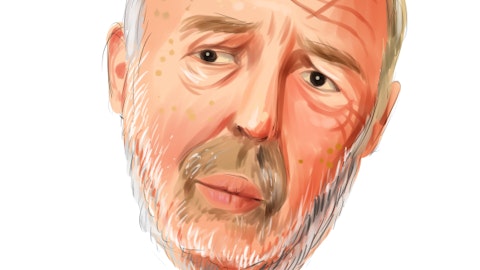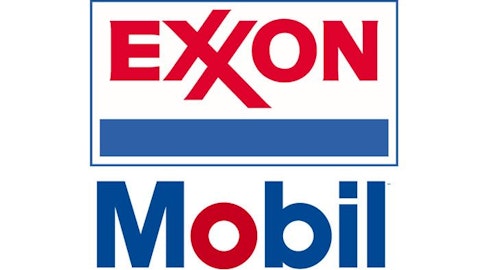
Heavily reliant on a business that’s slowly disappearing
While it’s true that Reynolds’ Camel and Pall Mall brands are either gaining or keeping their market share, this doesn’t mean as much in a shrinking industry. Smart companies in this industry realize the need to invest their excess cash flow into ventures that diversify their revenue away from traditional cigarette sales.
Another big challenge for Reynolds is they face competition that offers better scale, better brand awareness, or different geographical reach. With companies like Lorillard Inc. (NYSE:LO) and Altria Group Inc (NYSE:MO) in better position domestically, and Philip Morris International Inc. (NYSE:PM) offering a more international portfolio of brands, Reynolds American, Inc. (NYSE:RAI) is stuck between a rock and a hard place.
There is some good news
I’m not suggesting that there is nothing to like about Reynolds, they have two strengths their competition can’t match. First, Reynolds reported an operating margin of 34.6% in the current quarter. This was solidly ahead of their closest competitor Lorillard, and their operating margin of 30.63%. By comparison, Altria’s margin of 28.28% and Philip Morris International at 17.89%, just can’t compete.
A second positive is Reynolds has the best debt-to-equity ratio among their peers at 0.96. Lorillard Inc. (NYSE:LO) again comes in second at 1.2. Altria’s debt-to-equity ratio at 3.92, and Philip Morris International Inc. (NYSE:PM) International’s negative equity, would again seem to place these two at a disadvantage.
Valuation, payout, and long-term debt = 3 keys to this story
There are three distinct problems with the Reynolds’ story. The first is, while the company’s debt-to-equity ratio is currently the lowest of the group, this ratio has risen significantly over the last year. In fact, Reynolds’ long-term debt has increased over 60% in the last year. If the company continues to take on debt at this rate, they will go from the strongest balance sheet to the weakest in very short order.
The second issue at Reynolds American, Inc. (NYSE:RAI) is very critical to investors, and that is their dividend looks suspect. If you look at the core of their cash flow, and take net income, plus depreciation, and subtract capital expenditures, you get a sense of how the company is really doing.
Using this adjusted free cash flow payout ratio, Reynolds has the highest payout ratio among their peers at 220% in the current quarter. Even if we look at an average over the last four quarters, the payout ratio is still 99%. Altria’s payout ratio of 80% looks to be the most at risk after Reynolds. On the other hand, Lorillard and Philip Morris International Inc. (NYSE:PM) are at 67.46% and 60.07%, which look sustainable. When a company offers a 5.47% yield like Reynolds, and the payout can be called into question, the valuation of the company changes.
This leads us to the third and main issue with Reynolds, and that is one of their competitors offers a better combination of value. The PEG+Y ratio allows us to compare companies that pay yields, while taking into account their expected growth rate. A company with a higher combination of yield and growth, with a lower P/E ratio is what we are looking for. Think of the PEG+Y ratio kind of like an inverted PEG ratio, the higher the number, the better.
The only company with a lower PEG+Y ratio than Reynolds is Altria, where their yield of 5.18% and 7% growth isn’t enough to offset the forward P/E of over 14 the stock sells for. Calculating the PEG+Y, we find Altria scores a 0.86. Unfortunately both Reynolds and Philip Morris International Inc. (NYSE:PM) score only slightly better, with PEG+Y ratios of 0.95 and 0.96 respectively. While Reynolds American, Inc. (NYSE:RAI) pays a nice yield, and Philip Morris International is expected to grow the fastest, their P/E ratios already reflect these positive factors. The company the market seems to be missing the big picture on is Lorillard Inc. (NYSE:LO).
Bottom line
If analysts are correct, Lorillard is expected to grow earnings by 9% in the next few years. This represents the second fastest growth among the group, and puts the company nearly 2% ahead of Reynolds by this measure. In addition, Lorillard pays the highest current yield at 5.76% and has the lowest forward P/E of the group. When you add the fact that Lorillard also finished second to Reynolds in operating margin and debt-to-equity ratio, you can see the company is competitive across the board. In the end, Reynolds isn’t a terrible company, but their rising debt load, high payout ratio, and relatively worse valuation make Lorillard Inc. (NYSE:LO) a better option. Investors looking to smoke the market should put LO on their Watchlist today.
The article 2 Positives, But 3 Big Negatives From This Company originally appeared on Fool.com and is written by Chad Henage
Copyright © 1995 – 2013 The Motley Fool, LLC. All rights reserved. The Motley Fool has a disclosure policy.





